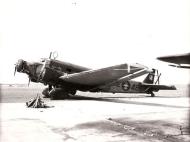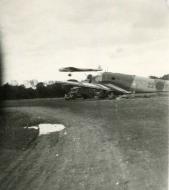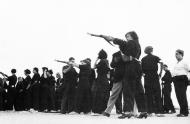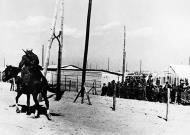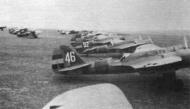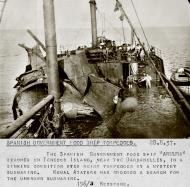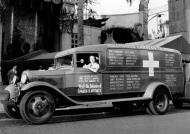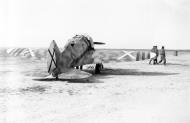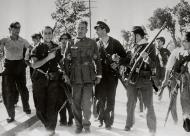
The Spanish Civil War photo gallery
Loyalist soldiers teach women to defend the city of Barcelona 01
Photo: In Spain, loyalist soldiers teach target practice to women who are learning to defend the city of Barcelona against fascist rebel troops of general Francisco Franco during the Spanish Civil War, on June 2, 1937. (AP Photo)
Explosion in Madrid Spain under the five story Casa Blanca building March 19 1938 01
Photo: Three hundred fascist insurgents were killed in this explosion in Madrid, Spain, under the five story Casa Blanca building, on March 19, 1938. Government loyalists tunneled 600 yards over a six month period to lay the land mine that caused the explosion. (AP Photo)
Insurgent fighter tosses a hand grenade at loyalist soldiers Burgos Spain Sep 12 1936 01
Photo: An insurgent fighter tosses a hand grenade over a barbed wire fence and into loyalist soldiers with machine guns blazing in Burgos, Spain, on Sept. 12, 1936. (AP Photo)
Condor Legion with the Saint Andrews Cross insignia of Franco Nationalist Air Force above Spain May 30 1939 01
Photo: German made Stuka dive bombers, part of the Condor Legion, in flight above Spain on May 30, 1939, during the Spanish Civil War. The black and white "X" on the tail and wings is Saint Andrew's Cross, the insignia of Franco's Nationalist Air Force. The Condor Legion was composed of volunteers from the German Army and Air Force. (AP Photo)
Families are seen taking refuge underground on a Madrid subway platform Dec 9 1936 01
Photo: Scores of families are seen taking refuge underground on a Madrid subway platform, on Dec. 9, 1936, as bombs are dropped by Franco's rebel aircraft overhead. (AP Photo)
Aerial bombing of Barcelona by Franco Nationalist Air Force 1938 01
Photo: Aerial bombing of Barcelona in 1938 by Franco's Nationalist Air Force. The Spanish Civil War saw some of the earliest extensive use of aerial bombardment of civilian targets, and the development of new terror bombing techniques. (Italian Airforce)
Following an aerial attack on Madrid Madrid relatives of those trapped in ruined houses wait for news 01
Photo: Following an aerial attack on Madrid from 16 rebel planes from Tetuan, Spanish Morocco, relatives of those trapped in ruined houses appeal for news of their loved ones, Jan. 8, 1937. The faces of these women reflect the horror non combatants are suffering in the civil struggle. (AP Photo)
Spanish rebel who surrendered is lead away after summary court martial by civil guards Madrid Spain July 27 1936 01
Photo: A Spanish rebel who surrendered is led to a summary court martial, as popular front volunteers and civil guards jeer, July 27, 1936, in Madrid, Spain. (AP Photo)
Fascist machine gun squad and riflemen hold positions along the Huesca front northern Spain Dec 30 1936 01
Photo: A fascist machine gun squad, backed up by expert riflemen, hold a position along the rugged Huesca front in northern Spain, Dec. 30, 1936. (AP Photo)
Riette Kahn is shown at the wheel of an ambulance donated by the American movie industry to the Spanish government 01
Photo: Riette Kahn is shown at the wheel of an ambulance donated by the American movie industry to the Spanish government in Los Angeles, California, on Sept. 18, 1937. The Hollywood Caravan to Spain will first tour the U.S. to raise funds to "help the defenders of Spanish democracy" in the Spanish Civil War. (AP Photo)
Web Reference: http://www.theatlantic.com/
Heinkel He 45 Aufklarungsgruppe 88 15x2 Spain Nov 1936 0A
Profile: As mentioned above, a batch of six Heinkel He 45s also arrived in November 1936 to equip Aufklärungsgruppe 88 along with the Heinkel He 46 C-ls. They were registered as 15-1 to 15-6. Although they turned out to be better than the He46C-1, they were not considered suitable for conducting reconnaissance deep within enemy territory, a task for which the Heinkel He 70s were adapted, which had also been assigned to the unit. It was therefore decided to use the He 45s for artillery correction, frontline reconnaissance and light ground attack. Little is known about the numerous missions of the two Ketten of three He 45s of A/88 in the early stages of the war, except for the fact that these aircraft had proved reliable and had responded very well to their requirements. In March 1937, most of the unit was based at theTablada aerodrome, while two He 45s were located at the Lacua aerodrome (Vitoria), awaiting the start of the offensive against Bilbao. In April, three new He 45s were received to compensate for the losses suffered until then. As no records of the losses of any of these aircraft in operation is known to date, it must be assumed that they had been lost in accidents or that the three new examples were intended to create a possible reserve. The Heinkel He 45s remained in A/88 until March 1939, when the new Henschel Hs 126s were already operational and ready to conduct the missions that the He 45s had previously carried out.
Nieuport Ni.52C1 Nationalist airforce 1x22 Spain 1936 0A
Profile: The Nationalists did not have any fighter unit in the territory they had initially controlled, but they could take control of the aircraft of the recently dissolved Seville Squadron that were present in the Southern Regional Park and another machine that had been damaged in Granada and was repaired in Seville. In later days, this small contingent was supplemented by another three Nieuport 52C.1s whose pilots arrived at the Granada airfield being unaware that it was in the hands of the Nationalists and, on 7th August, by another Nieuport from Getafe purposely flown to Burgos by Lieutenant César Martin Campos. Fifteen aircraft which were located in the Southern Regional Park, had to be enlisted in a hurry.
Nieuport Ni.52C1 Nationalist airforce 12 Spain 1936 0A
Profile: The Nationalist pilots actively used the Nieuport 52C.1 in July and August 1936. This included a number of those who would reach the category of aces during the conflict, such as the then Captains Joaquin Garcia Morato (who achieved one victory with NL52C.1 of a total of forty) and Angel Salas Larrazâbal (a single victory with NL52C.1 - of a total of 22 - scored on 23rd August over a light aircraft on the Teruel front), and Lieutenants Miguel Garcia Pardo (who on 9th August scored his first victory of 13, downing a Breguet XIX over the Sierra de Guadarrama), Miguel Guerrero Garcia (who shot down a Dornier Wai from Malaga over the Strait of Gibraltar on 25th July, a Vildebeest over Iznajar on 29th July, and another Vildebeest and a Breguet XIX over Iznalloz two days later), Julio Salvador Diaz-Benjumea (who on 28th July scored the first of the twenty-four victories that he achieved in the Spanish Civil War, shooting down a Nieuport 52C.1 over the Sierra de Madrid whilst piloting an aircraft of the same type registered as 3-43) and Narciso Bermudes de Castro (who, with this type of aircraft, shot down another Nieuport 52C.1 on 27th July over the town of Pihar, Granada). The arrival of more modern equipment, such as the Heinkel He 51 and the Fiat CR.32, led to the withdrawal of the Hispano-Nieuport 52C.1 from the first line by the Nationalists in September 1936.
Breguet XIX Nationalist airforce 10x68 Spain late 1936 0A
Profile: In October 1936, the Nationalist Breguet XIXs were distributed into ten squadrons of three aircraft each, assigned to five groups, which adopted the designations l-G-10 to 5-G-10. The 1st, 2nd and 3rd groups were the old ones from Logrono, Leon and Seville, the 4th was stationed in Granada and the 5th was the old group from Africa. The Basque front was stabilized in October, but in Asturias the missions in support of the defenders of Oviedo were continued and it was necessary to set up a new airfield in Navia, north of the Cantabrian Mountains.
Breguet XIX Nationalist airforce 22x2 Spain late 1936 0A
Profile: The Nationalist Breguet XIX were active on all the fronts that had recently been opened; the aircraft from Leon and Logrono were deployed in reconnaissance and attack missions supporting the advance of General Emilio Mola Vidal's troops in the occupation of Guipuzcoa, in the Madrid mountains and in the attack on the anarchist columns that were heading from Catalonia to occupy Huesca and Zaragoza; in support of the defenders of the encircled city of Oviedo and fixation of the Northern Front. When discussing the performance of the Breguet XIX from the south (Tablada and Morocco), it is worth highlighting the protection they gave to the so-called "Victory Convoy" in the waters of the Strait of Gibraltar, which took place on 5th August 1936 when the uprising forces broke the blockade of the Strait and transported troops and materiel from North Africa to Algeciras; as well as the support to the African columns that marched on Madrid, progressing through Extremadura, and the movements that led to the consolidation and expansion ofthe territory controlled by General Gonzalo Queipo de Llano.
Breguet XIX Nationalist airforce 22x13 Spain late 1936 0A
Profile: In regard to the Breguet XIX, the two squadrons from Leon, the two from Logrono, the two from Seville, the three (reduced) from Morocco and the Sahara patrol, together with the machines that escaped from Republican zone, made a total of at least seventy-two aircraft on the Nationalist side.
Nieuport Ni.52C1 n Breguet XIX Profiles from: aircraft of the spanish civil war 1936-1939 by Carlos Fresno Crespo, Artemio Montera Perez
https://ak-interactive.com/product/aircraft-of-the-spanish-civil-war-1936-1939/Heinkel He 45 Aufklarungsgruppe 88 15x20 Spain Nov 1936 0A
Profile: The illustrations on this page, the preceding one and the subsequent ones, show the different camouflage schemes worn by the Heinkel He 45s of Aufklärungsgruppe 88. Taking into account the number of Heinkel He 45s employed by A/88 and their limited operational use, the losses of these aircraft during the campaign in the North can be considered high.
Heinkel He 45 Aufklarungsgruppe 88 15x39 Spain Nov 1936 0A
Heinkel He 45 Aufklarungsgruppe 88 15x6 Spain Nov 1936 0A
Profile: The year 1938 began with the loss of the He 45 of Leutnant Heinz Runze, caused by anti-aircraft fire. In the middle of January, the unit received five new He 45s from P/88 located at the Virgen del Camino aerodrome in Leon, to replace the losses. In 1938, A/88 was extensively used in the front of Aragon, searching for artillery targets and attacking concentrations of troops with small anti-personnel bombs. The unit tackled these tasks on an almost daily basis and, against all odds, almost without losses, until a storm devastated the Cenia airfield on 29th August, reducing the number of operational aircraft to three.
Heinkel He 46C1 Aufklarungsgruppe 88 11x173 Spain 1936 0A
Profile: Six Heinkel He 46 C-ls arrived in Spain, destined for Aufklärungsgruppe 88, aside from the twenty that had been delivered to the Spanish aviators. They were in Avila in mid-October 1936 where they were registered as 11-171 to 11-176, but for an inexplicable reason, the prefix '11' was not included when the registration numbers were painted on these machines. It was soon proved that they do not withstand comparison with the Heinkel He 45s, which were also assigned to this unit, and at the end of 1936 they were handed over to the Spaniards, allowing the latter to form the fourth squadron equipped with this model: the 4-E-11.
Heinkel He 45 Profiles from: aircraft of the spanish civil war 1936-1939 by Carlos Fresno Crespo, Artemio Montera Perez
https://ak-interactive.com/product/aircraft-of-the-spanish-civil-war-1936-1939/Heinkel He 51B1 Nationalist Jagdgruppe 88 2x85 flown by Dr Heinrich Neumann Spain 1937 0A
Profile: On 27th July, the last day of the Battle of Brunete, Oberleutnant Adolf Galland took over command of 3. J/88, being promoted and transferred from 1. J/88. Three days later, the unit moved to the Calahorra de Boedo airfield in Alar del Rey with the nine remaining operational aircraft, in order to participate in the Santander campaign together with 1. J/88 (with another nine aircraft). The rest period was short: the offensive began on 7th August. The two squadrons equipped with biplanes were in charge of covering the right wing of the Nationalist forces. On 18th August, the unit occupied the Orzales aerodrome, about seven kilometers from Reinosa. On 2nd September, the entire J/88 was installed in Pontejos, nine kilometers of Santander. During this period, 1. J/88 converted from the He 51 to the Bf 109 B and, at one point, it had fourteen Heinkels and seven Messerschmitts, but by the middle of the month it had only a handful of operational biplanes. During the Asturias campaign, it only had the Bf 109s. The Nationalist command took a very short break after entering Santander (26th August 1937), and at the end of the month the rebels began their march on the mountainous Asturias. However, on 5th September, the Nationalist outposts, composed of General José Solchaga's troops, encountered fierce Republican resistance at the El Mazuco pass. At that time, Jagdgruppe 88 had only one He 51 squadron, the 3. J/88, equipped with 15 aircraft. On 11th September, Leutnant Hans Kemper collided with a Heinkel He 70 whilst taking off from Santander and destroyed the aircraft. 3. J/88 stayed in Asturias until the fall of Gijon, which occurred on 21st October 1937, and then left for Leon to start a well-deserved rest season, while the aircraft were inspected in the park of the Virgin del Camino: the Luftzeuggruppe und Luftpark (P/88, the Air Maintenance Group) was based there since September, along with the Aerial Arsenal of the Nationalist Aviation, arriving from the Sevillian base of Tablada. During the Asturias campaign, 3. J/88 had achieved record levels of fuel and ammunition consumption, with the peaks of 25000 rounds per day! The illustration depicts Heinkel He 51 B-1 (2-85), flown by Stabsarzt Dr. Heinrich Neumann.
Heinkel He 51B1 Nationalist Jagdgruppe 88 2x102 flown by Dr Heinrich Neumann Spain 1938 0A
Profile: Dr. Neumann was a medical officer of the Condor Legion, assigned to San/88. As he was an amateur pilot, he obtained the right to use a He 51 to move around the different aerodromes where his potential patients could be. On 5th December 1937, he made a spectacular landing in Burgo de Osma, damaging the 2-85. He later managed to obtain another aircraft, the Heinkel He 51 B registered as 2-102, seen here in early 1938. The Mickey Mouse emblem tells us that it should have been borrowed from 3. J/88. The machine carried the legend "Tut mir nichts, ich tu' Euch auch nichts!" which may be translated as: "Don't bother me and I won't bother you either!". The end of the Northern campaign left a large number of troops available (employed in the Northern front between March and October 1937), which were deployed from the Jalbn Valley to Medinaceli, with the purpose of resuming the offensive on Madrid, starting again from the province of Guadalajara. The same happened with the mass of aviation that had held control of the air in the Cantabrian coast and that was deployed in the aerodromes near the planned theater of operations, although at the beginning of December, the strength of 3. J/88 was minimal because, as we've already mentioned, almost all their aircraft had to go through the P/88 workshops. On 1st December, there were seven He 51 in flying condition: five in Leon and two in Burgos, respectively. The aircraft from the new shipment of thirty-six He 51s arriving at the end of 1937 had not yet been assembled. Meanwhile, 4. J/88 was reformed on 2nd November 1937 with new materiel and personnel disembarked from the merchant ship "Gulf of Panama". The aircraft were assembled in the Leon workshops. The Staffelkapitän, Oberleutnant Eberhard von Triitzschler-d'EIsa, did not take over command until 9th November. Initially, it was employed as a kind of "operational training unit" rather than an operational Staffel. At the end of 1937, the Republican Army command noticed the movement of troops towards the provinces of Soria and Guadalajara and decided to anticipate the Nationalist plans: on 15th December the battle of Teruel began. The Republicans accumulated a large number of men and equipment around the Teruel capital and surrounded it from the rest of the Nationalist territory, although the conquest of the city was delayed for two more weeks due to the resistance of the garrison and harsh weather conditions.
Heinkel He 51B1 Nationalist Jagdgruppe 88 2x111 Spain 1937 0A
Profile: In support of the Nationalist troops which were fighting to break the siege since 23rd December, He 51s of 3. J/88 and the reformed 4. J/88 came to Calamocha, about 70 kilometers from Teruel. On 7th January, both squadrons were surprised on the ground by two Tupolev SB-2 'Katiuska' squadrons which hit five aircraft, of which two were unrepairable (one from each squadron). To counter the air attacks, the Republican forces were progressively equipped with a certain number of 20 mm Oerlikon cannon batteries. In result, during the battle of Teruel, three Heinkel He 51s of the J/88 were shot down by AA fire: one from 3. J/88, flown by Leutnant Heinz Runze who was shot down and killed on 1st January, and two from 4. J/88, including Leutnant Gerhard Klein, who was shot down and killed whilst flying the 2-59 on 18th January. The next day, Unteroffizier Heinrich Tomer in the 2-105 fell victim of the Republican AA fire. The following day, Leutnant Priebe avenged his comrades by scoring a direct hit with six 10 kg bombs at a T-26 tank, in the streets of the city. The shots in the Teruel sector had still echoed, after consummating the victory of Alfambra on 24th February, when General Franco made the decision to exploit the recently achieved success and undertake a triple maneuver of breakthrough and penetration to advance through the Maestrazgo towards the Mediterranean, an objective that was achieved on 15th April, when the 4th Navarra Division entered Vinaroz and the 83rd Division got Benicarlo. From then on, the participation in operations of the 3. and 4. J/88 ran in parallel. On 22nd March, Hauptmann Hubertus Hering arrived to replace Gal land at the command of 3. J/88.
Heinkel He 51B1 Nationalist Jagdgruppe 88 2x119 Spain 1937 0A
Profile: Following the advance of the troops, the squadron moved from the Gallur airfield (where it had settled on 23rd February) to Serihena and, on 27th March, to Bujaraloz. On 30th March, a tragedy occurred when the He 51s of Hauptmann Hering and Leutnant Manfred Michaelis collided in mid-air to the west of the Cinca River. Both pilots were killed, forcing Galland to remain in command. The bad streak continued, as on 10th April two aircraft were hit by the Republican AA fire and had to force-land near Alfarrâs, near the Almenar airfield: one of the biplanes was completely burned and the other suffered 40% damage, but the pilots were unharmed. After combat on 12th April, a He 51 flown by Unteroffizier Waldemar Gerstmann had to perform an emergency landing to the west of Balaguer. The pilot had broken his collarbone. On 24th May, Oberleutnant Werner Molders took over command, permanently replacing Galland. After the decision taken by General Franco to resign from the persecution of the defeated Republican Army of the East and the continuation of the advance through Catalan lands, once Lérida had been occupied, he chose to continue the victorious offensive undertaken in Aragon in southern direction, towards Valencia. The operation was launched on 23rd April. The 3. and 4. J/88 continued to fly the same type of missions, now in support of the Galician Army Corps, for which they traveled to the La Cenia aerodrome. On 31st May, during a mission in support of General Aranda's Army Corps, Leutnant Fritz Losigkeit's biplane was hit by the Republican 20 mm Oerlikon. The pilot managed to bale out, but he was taken prisoner. On 2nd June, 3. J/88 lost its last He 51: Leutnant Martin Haupt was shot down and killed by ground fire. During the offensive against Valencia, 4. J/88 was tasked with neutralizing the Soviet 76,2 mm anti-aircraft batteries installed by the Republicans in the line of advance. On 4th May, Unteroffizier Andreas Hester's aircraft was hit by AA guns and caught fire: being too low to jump, Hester attempted an emergency landing near Albocacer, but he died in the crash. On 8th May, 4. J/88 suffered its last loss when Leutnant Erich Beyer was shot down by ground fire and taken prisoner. Following the report by Harro Harder, the German General Staff decided to re-equip 3. J/88 with the newly arrived Bf 109s, while 4. J/88 was disbanded on 17th June, as the Germans didn't want to sacrifice more of the precious Bf 109s in the Spanish adventure. The surviving He 51s were handed over to the Spaniards.
Heinkel He 51B1 Profiles from: aircraft of the spanish civil war 1936-1939 by Carlos Fresno Crespo, Artemio Montera Perez
https://ak-interactive.com/product/aircraft-of-the-spanish-civil-war-1936-1939/Junkers Ju 86 Nationalist airforce over Spain 1936 01
Photo: Another aircraft - in this case of a very modern concept - that met a resounding failure in Spain was the twin-engine Junkers Ju 86 bomber. Its diesel engines were not really ready, causing several accidents and three permanent losses among the five aircraft of the Condor Legion. Curiously, the two surviving machines, which had been handed over to the Spanish in the autumn of 1937, were used by them until the end of the war with a very acceptable performance. (Via Jesus Salas)
Junkers Ju 52 3mg3e(W) Nationalist AF Legion Condor seaplane 527 web 01
Photo: The Junkers Ju 52/3mg (See) seaplane registered as 527, which was used as a liaison aircraft by AS/88 from Mallorca, was armed with a 7,92 mm MG 15 machine gun in the front dorsal position and a 13 mm MG 131 in the rear dorsal position. It is still striking that a transport aircraft had more powerful defensive armament than those of the same type used as bombers.
Photo's: aircraft of the spanish civil war 1936-1939 by Carlos Fresno Crespo, Artemio Montera Perez
https://ak-interactive.com/product/aircraft-of-the-spanish-civil-war-1936-1939/Spanish Civil War Posters
The Spanish Civil War was an extremely complex conflict that ravaged the country from 1936 to 1939 and devastated Spain and its inhabitants. The estimates of how many people were killed in the war run from 500,000 to 1,000,000. The war came about when the Spanish communist party came to power after defeating members of the monarch in elections. They decided that they wanted to bring about land reforms and exclude the church from the government. This was not popular among the Nationalists at the time. So the Spanish Army staged a military coup to overthrow the Second Spanish Republic. The attempt would prove successful, with the eventual installation of a dictatorship led by General Francisco Franco in 1939. The nationalists were made up of monarch supporters, religious groups, Falangists and Fascists. The communist or left wing side was made up of Socialists, Marxists, Anarchists, Communists, Basque and Catalan seperatists and a number of other extreme left wing groups and trade unions. War broke out when the right wing groups refused to accept the left wing as the government and the land reforms they were about to impose.
Before his victory, Franco's forces met the resistance of republicans, socialists, communists and anarchists in a bitter battle for Spain. During the war both sides accused each other of being puppet governments for other governments, The Nationalists, as the rebels were called, received aid from Fascist Italy and Nazi Germany. The Republicans received aid from the Soviet Union, as well as from International Brigades, composed of volunteers from Europe and the United States.
Politically their differences often found extreme and vehement expression in parties such as the Fascist-oriented Falange and the militant left-wing anarchists.
Among the many aspects of the war that continue to exert a particular fascination today is the wealth of astonishing propaganda posters produced by the various factions involved in the fighting. There was a high rate of illiteracy in the country, particularly among women, peasants and the working classes, so poster designers employed rousing imagery and succinct slogans to deliver their message.
Propaganda has played a vital part in the wars of the early 20th century it was used by Hitler in World War 2 by Mussolini in his control of Italy and of course by Stalin. Throughout the course of the Spanish civil war propaganda was used by all sides to communicate various messages, some of these messages were to encourage peace and to keep fighting for food and freedom whilst others were to convince people to leave the city or join the army. The messages varied, as did the posters. What it left us with in the end was catalogues of posters that are a poignant reminder of these dark times in Spanish history. However they are also pieces of art that serve to remind us of our not too distant past.
The war was much about ideas. Many political ideologies of the time were battling for power and recognition. Propaganda was a major part of convincing the Spanish civilians to side with various parties. Colourful and artistic posters were used to persuade civilians and spread messages as the majority of the population were illiterate and uneducated. These posters were designed by some of the best artists in Spain and the streets of all of Spain's major cities were plastered with these posters. The Nationalists lead by Franco used the posters to win the support of the people after taking a city from the communists. The communists used the posters to win support from the peasants they were trying to help and to spread messages to the people whilst they were in power. The anarchists used their posters to introduce their new radical idea to the people in the hope of winning their hearts and minds.
These posters are perhaps the most prominent remains of the conflict that presented to the people of Europe and the world the tragedies of war and how the people of Spain were living through these tragedies. These posters are among the most important documents of the war remaining today and can be found in museums across Spain as well as other European countries.
Eyewitnesses accounts of the war attest that the posters were everywhere during the war. The cities walls were awash with the colour and creativity of propaganda. On almost every building there were party posters: posters against Fascism, posters about the defence of Madrid, posters appealing for recruits to the militia...and even posters for the emancipation of women and against venereal disease. Streets aflamed with posters of all parties for all causes, some of them put out by combinations of parties. In Republican territory, when a house was destroyed by the enemy bombs, propaganda agencies would fix posters on the ruins in order to denounce the enemy, hoping to turn aggression into rage. In Madrid, the capital of the Republic, shop owners were forced to fill their store fronts with posters: "Every space must be used to incite the spirit in its fight against the enemy," stated an article in the newspaper ABC on October 30, 1936. When a city was taken the streets of were plastered with posters to convince its citizens to change sides.
The Nationalist party produced a far lesser amount of posters than their rivals. This was primarily because they hadn't as much inward struggle and because what they were promoting was familiar to the Spaniards. Their posters were primarily used after the taking of a city to encourage calm amongst its citizens. They also tried to encourage people to return to normality after the war.
The Communist or the Republican party were the most prolific producers and publishers of posters during the Spanish civil war. Their posters were used to garner the support of the people and often to spread messages to the rurally isolated peasants. These posters were important in communicating to an predominantly illiterate population and encouraging men to join the militia and support the communist movement. Some posters were co signed by the anarchists and communists during their coalition.
Over the course of the war thousands of posters were created and circulated throughout Spain. Many of these survived the war, however many didn't survive the war and are lost forever.
Source Web Reference: http://isabelgg.blogspot.com/
Aviación Nacional or Spanish Nationalist Air Force
Jagdgruppe 88
Active between November 1936 - June 1939
Jagdgruppe 88 (J/88) was a German Condor Legion fighter group serving in the Spanish Civil War. J/88 consisted of a headquarters (Stab) and four squadrons (Staffeln), although the 4th Staffel was short-lived. J/88 had formed on 3 November 1936.
Formation
The Condor Legion was an expeditionary force of soldiers and airmen sent to aid the Spanish Nationalist group during the Spanish Civil War. The Germans used the war as an opportunity to evaluate new equipment, guns, vehicles and aircraft, and to develop tactical techniques which were later used in the 1939-45 conflict.
In addition to a detachment of converted Junkers Ju 52s, a initial cadre of six Heinkel He-51s, were despatched, with enough service staff to instruct the Spanish aircrews in the operation and maintenance of the aircraft. Under the leadership of Leutnant Hannes Trautloft J/88 arrived by sea in August 1936. While the Spanish Air Force pilots trained, Trautloft and the other pilots became the first of an eventual 326 aircrew who would serve with Jagdgruppe 88 during the next two and a half years.
Operational history
Oberleutnant Eberhardt Kraft made the unit's first claim on 25 August 1936, a Casa-Breguet 19. Meantime aid from the Soviet Union arrived for the Republican forces. The supplied Soviet fighters (Polikarpov I-15 and I-16) easily outperformed the Heinkel He 51s, and in late 1936, three Messerschmitt Bf 109 prototypes were sent to J/88, and soon followed by the first 15 of the latest Bf 109-Bs. A He 112 V6 prototype was also sent. Armed with a single 20mm cannon firing through the airscrew hub, the anonenvogel (cannon bird) was to be evaluated as a ground attack aircraft and assigned to Jagdgruppe 88 at Almorox in March. Over the next few months the He 112 V6 was flown by several pilots, but on 19 July 1937, with Unteroffizier Max Schulze flying, the engine seized during landing, and the He 112 V6 broke its back and was written off.
The first unit to fly the Bf 109 was 2. Staffel, commanded by Oberleutnat Günther Lützow. The unit initially suffered several landing accidents, until the pilots became familiar with taking off and landing on the narrow‑track undercarriage.
The first major action of 2.J/88 with the Bf 109-B1, took place during the Battle of Brunete in July 1937. Based near Ávila, its main mission was to escort the Junkers Ju 52 bombers. The Bf 109s, utilising superior tactics developed by Leutnant Werner Mölders, turned air superiority in favour of the Condor Legion. The Bf 109s drew first blood on 8 July 1937 when Leutnant Rolf Pingel and Uzz. Guido Höness claimed two Tupolev SB‑2 bombers. Air combats fought on 12 July resulted in two Aero A.101s claimed by Höness, an SB‑2 to Pingel, and three I‑16s by Pingel, Fw. Peter Boddem and Fw. Adolf Buhl. Höness became the first Bf 109 loss, probably shot down and killed by an Republican I-16 flown by American Frank Tinker. The Condor Legion lost eight aircraft, but J/88 fighters claimed 18 victories.
On 24 July Republican forces launched their final major offensive, the Battle of the Ebro. Reconnaissance aircraft of the Condor Legion noticed the troop build-up, and while the Republic forced gained ground, they failed to take Gandesa, due to intensive ( over 400) sorties by 70 Legion aircraft. The rest of the battle saw a series of air strikes, followed by a Nationalist counter-offensive. During the 113-day battle, only 10 aircraft were lost and 14 damaged; the Legion claimed 100 Republican aircraft destroyed, a third of those lost. Only 5 aircrew had been killed, and 6 captured.
Some 19 Bf 109C-1s, with a fuel‑injected Jumo 210Ga engine and four 7.9mm machine guns, arrived in Spain in the spring 1938, followed by nine Bf 109-Ds in August. In February 1939 the latest Bf 109E‑1 model was sent to Jagdgruppe 88, with 2. Staffel converting from the Bf 109-B in late February 1939, just prior to the end of the War. The unit then took part in operations against the remnants of the Republican Air Force through early 1939, with considerable success. The men of J/88 returned to Germany in May 1939.
365 aircraft were claimed destroyed by Jagdgruppe 88, and 26 pilots claimed 5 kills or more. Werner Mölders (14), Wolfgang Schellmann (12), Harro Harder (11) and Peter Boddem (10) were top scorers.
Prominent members of J/88
Hauptmann Gotthard Handrick, winner of the modern pentathlon at the 1936 Berlin Olympics, arrived in the summer of 1937 to assume command of Jagdgruppe 88, remaining until September 1938, during which time he had claimed 5 victories.
Oberleutnant Werner Mölders arrived on 14 April 1938, and took over from Adolf Galland commanding 3 staffel. During the conflict he showed considerable qualities as both a pilot and tactician. He helped to develop the "finger four", formation, which improved a combat flight's all-round effectiveness, vision and flexibility in combat. Between July and November 1938 he shot down fourteen aircraft: eleven I-16s, two Polikarpov I-15s and one SB-2, mostly flying a Bf 109C-1 coded 6-79 "Luchs".
Leutnant Wilhelm Balthasar joined Jagdgruppe 88 in September 1937, and gained six victories, including four Tupolev SB-2 bombers shot down in one mission on 7 February 1938.
Oberleutnant Adolf Galland was appointed Staffelkapitän of 3. Staffel, in July 1937, eventually flying 200 ground attack missions in the Heinkel He 51.
Commanding officers
Hauptmann Hubertus Merhardt von Bernegg, November 1936 - July 1937
Hauptmann Gotthard Handrick, 18 July 1937 - 10 September 1938
Hauptmann Walter Grabmann, 9 September 1938 - 31 March 1939Source Reference: Jurado, Carlos Caballero (2006). The Condor Legion: German troops in the Spanish Civil War.
Osprey Publishing. ISBN 1-84176-899-5.
Messerschmitt Bf 109 losses in chronological order - 40 in Total
Messerschmitt Bf 109 losses in chronological order - 40 in total Date A/C Pilot Unit Location Fate Cause 10/12/36 6x3 Uffz Erich Kley 2.J/88 Tablada Accident Crashed on takeoff 11/02/37 6x2 Lt Paul Rehahn VJ88 Caceres Accident 12/07/37 6x4 Lt Guido Höness 2.J/88 Brunete Shot down Air combat 17/07/37 ? Lt Golthard Handrick Escalona Shot down I-16 (Tinker) 18/07/37 6x14 Uffz Haarbach Shot down by I-16 ??/07/37 6x13 VJ88 Written off 11/07/37 ? Uffz Norbert Flegel Accident Crashlanded ??/08/37 6x8 2.J/88 Accident Crashlanded ??/08/37 6x9 2.J/88 Written off ??/08/37 6x30 Ofw Reinhard Seiler 1.J/88 Alar del Rey Accident Crashlanded ??/09/37 6x7 Fw Norbert Flegel 2.J/88 Santander-Ost Accident Crashlanded ??/09/37 6x12 Uffz Hermann Stange 2.J/88 Santander-Ost Accident Crashlanded 05?/09/37 ? Lt Walter Adolph Llanes Accident Crashlanded 05/11/37 ? Fw Leo Sigmund Teruel Shot down I-16 30/11/37 6x15 Fw Otto Polenz 2.J/88 Bujaraloz Shot down POW 23/12/37 ? Uffz Anton Kurz Teruef Shot down 07/02/38 ? Obit Wilhelm Balthasar Teruel Shot down SB-2 11/03/38 ? Fw Alexander Graf zu Dohna Caspe/Sastago Shot down 1-16 (J.Bosch, 21/4) 04/04/38 6x20 Lt Fritz Awe 2.J/88 Lanaja Mid-air collision Bf 109 04/04/38 6x21 Uffz Adolf Borchers 2.J/88 Lanaja Mid-air collision Bf 109 20/04/38 ? Sagunto Shot down 1-16(21/3) 11/05/38 ? Sri Espadan Shot down 1-16 (21/3) Tarazona 14/06/38 ? Lt Helmut Henz Mijares Shot down 1-16(21/4) 14/06/38 6-33 Lt Eckehardt Priebe 1.J/88 Villafames Shot down 1-15? 14/07/38 ? Teruel Mid-air collision 1-15 (Redondo) 23/07/38 ? Günther Böer 3.J/88 La Cenia Accident salvaged 25/07/38 6-6 Lt Franz Jaenisch 2.J/88 Accident Crashlanded 03/08/38 ? Lt Horst Lehrmann Flix Shot down Flak 05/09/38 ? Lt Martin Lutz 3.J/88 Shot down 09/09/38 ? Gandesa Accident (50%) Engine failure? 04/10/38 6-67 Lt Otto Bertram 1.J/88 Venta de C. Shot down I-16 (Cortizo, 21/4) ??/11/38 6-74 La Cenia Accident Crashlanded 13/12/38 ? Shot down 16/12/38 ? La Cenia Bombed on ground SB-2 16/12/38 ? La Cenia Bombed on ground SB-2 29/01/39 ? Lt K.Botticher Mollet Shot down Flak 06/02/39 ? Uffz Hans Nirminger Vilajuiga Shot down G-23 'I-15' 06/02/39 6x98 Uffz Heinrich Windemuth 1.J/88 Vilajuiga Shot down G-23 'I-15' 16/03/38 ? Lt Rolf Strossner Collision Bf 109 16/03/38 ? Collision Bf 109
Some aerial combats
4th November 1936: the first I-15 combat. 11 Chatos led by P.V.Rychagov attacked 9 He 51's and shot down 4 of them. (It's the one of few examples when the Republicans had number superiority. In most cases that was on the contrary, especially in the end of the war - because of huge German and Italian help to the Nationalists.) In the same day, I-15s downed and damaged some Fiats. Soviet planes had no combat losses, but 2 pilots mistakenly landed on an enemy airfield. The fascists killed them and cut one of them up and drop his body parts in a box to Republican positions - what a chivalry... WOW
6th November 1936: the first air combat over Madrid Junkerses and Fiats tried to bomb the capital again. But this time the Republicans have Soviet fighters and shot down 9 fascist planes.
November 1936: The big melee over 200 planes (I-15, I-16, R-5 vs He51, CR.32). The Republican losses were: 4 planes ; the Nationalist losses were: 15 planes
15th May 1937: the 1st downed Messerschmitt-109, the victory of Leopoldo Morquillas Rubio.
29th May 1937: German brand-new heavy cruiser "Deutschland" was attacked by two SB bombers (commanded by Ostryakov) which achieved two direct hits and one point-blank explosion. There were destroyed: the 3rd 150mm turret, the one of boilers, a hydroplane; 23 men killed and 77 wounded.
14 June 1937: 14 I-15 along with I-16 engaged big group of enemy planes (Ju 52/3m, He 46, He 51, CR-32). Nationalists losses: 1 Junkers and 6 ftrs, Republican losses two I-15 and two I-16.
8th July 1937: the 1st Messerschmitt combat over Madrid. It was initiated as I-15's (10 planes) combat vs bigger number of Fiats (20..30). Three CR.32's were shot down; and one I-15 was flamed, but managed to ditch. Then 10 I-16's arrived and 8 Bf 109's appeared too. In result two brand new German planes were shot down.
27th July 1937: the 1st night victory (a Junkers by Soviet pilot M.Yakushin). 1st September 1937, Belcite area: During the day Republicans managed to shot down at least 26 (downed to Republican territory) Nationalist planes by cost of only 2 own planes. 19 fascist pilots were made POW's', including famous Carlos Bayo.
15th October 1937: ground strike to Garapinilios. It was the preventive and well-planed action which had great success. I.Eremenko was the flight leader of 64 ftrs. Two I-15 sqds led by Serov and Chindosvindo attacked the airfield by MG fire and little bombs. Four I-16 sqds led by Zarausa, Pleschenko, Devotchenko, Gusev wasted time in close escort, then strafed some ground targets too. Meanwhile 16 bmrs (SB-2's led by A. Senatorov) hit military targets of Saragossa. About 60 Nationalist planes (which were almost ready to take off to hit Republican airfields) were destroyed and damaged; AA batteries were caught at surprise and suppressed; 2 Bf 109's were flamed when they tried to scramble; fuel tanks and ammo storages blowed up; personnel barracks and just arrived buses with pilots were strafed. The Republicans had no losses.
5th September 1938: Intercept (I-16 vs Bf 109, CR.32, Ju 86) with the Republican losses: 2 Moscas ; the Nationalist losses: 6 x CR.32's + 2 x Bf 109's + 2 x Ju 86's
The best mission of the time. In 1938, Sergey Gritsevets shot down 7 (seven!) Nationalist planes (incl. 5 Chirries) during one half of hour. The Soviet ace flew I-16 type 10, which one was badly damaged, but the talent pilot was able to land even in such situation. It was the best record until famous combat of Alexander Gorovets in 1943.
18th September 1938: 1st combat of I-16's type 10 equiped with instandart F-54 engine with improved hight-alt capabilities. In company with regular I-16's type 10 and I-15's eleven Bf109's were shot down with no Republican losses.
The JÄGER from GUADARRAMA
German military aid was proving crucial to the success of the Nationalist war effort.
Away from Tablada and Escalona del Prado, German military aid was proving crucial to the success of the Nationalist war effort. The first ten Ju 52/3ms donated to Franco had arrived in Spanish Morocco, and they were put to immediate use ferrying badly needed troops and ammunition from the Ejército de Africa over the Straits of Gibraltar to the mainland. Their presence greatly accelerated what became known as the puente aéreo - the first large-scale ‘airbridge’ or airlift in history. Between 29 July and 5 August, these aircraft flew 1500 men, including six assault battalions, from Morocco to Seville, and in all 10,500 men were transferred to Spain from North Africa in July and August 1936, followed by 9700 in September.
By its conclusion on 11 October, the airlift had transported just under 14,000 troops and some 500 tons of materiel, including 36 artillery pieces. Historians have taken the view that, in truth, the airlift saved the Nationalist cause in the summer of 1936. Indeed, in 1942, Hitler declared that ‘Franco ought to erect a monument to the glory of the Junkers 52’.
Source Aces of the Legion Condor by Robert Forsyth Osprey Aircraft of the Aces 99 Publisher: Osprey ISBN: 9781849083485
So Who Sent What ?
Menpower Planes Tanks Arm.cars Guns Nationalists Germany 26 500 650 200 700 Italy 80 000 1000 150 16 2000 Republicans USSR 3000 800 350 120 1500 other 35 000 320
USSR sent to Spain:
800 planes (25 I-15/M-22 and 171 I-15/M-25), I-152; UTI-4, I-16 type 5, type 6, type 10; R-5; R-Z; SB-2)
350 tanks (~300 T-26; 50 BT-5)
120 arm.cars (80 BA-6; 33 FAI; 7 BA-I)
1500 guns (45mm, 76mm etc.)
20000+ MGs (DT, Maxim) ; ~500000 rifles (Mosin)
torp.boats, trucks, radiostations, searchlights, ammunition, fuel, and so on.
InterBrigades (31000 men):
9000 French, 3000 Germans, 3000 Poles, 3500 Italians, 2500 Americans, 2000 British, 1000 Chehoslovaks, 1000 Autsrians, also Yugoslavians, Hungarians, Scandinavians, Canadians, Belgians, Romanians...
Germany used in Spain:
650 planes (He 51, He 112, A r69, Bf 109B, Bf109C, Bf 109E, Ju 52, Ju 86, Ju 87, He 45C, He 46C, He 59B, He 60D, He 70F, He 111B, HS 123, HS 126, Do 17E, Do 17P, ..)
200 tanks (Pz.IA and Pz.IB)
military ships; over 700 guns (37mm PAK36, ..), infantry weapon and so on.
Italy sent to Spain:
1000 planes (Fiat CR.32, CR32bis, Ro.37, G.50, SM.81, SM.79, CANT Z.501, CANT Z.506, BA.65, BR.20, CA.310)
150 tankettes (CV-3/33, CV-3/35, CVLF-3)
16 arm.cars (17M)
about 2000 guns (20mm, 47mm, 65mm, ..),
infantry weapon (incl. 240 000 rifles),
2 submarines and 4 destroyers,
8000 cars,
ammunition and so onAlso, German, Italian and even British fleets supported the rebels.
France acted against law-voted Spanish republican goverment, stopping weapon transit aid.
Lucena Córdoba, Spain Map
Werner Mölders, 3.J/88
Spanish Awards: Spanish Cross in Gold with Diamonds
| Date | Enemy A/C | Kill No |
|---|---|---|
| 15/7/38 | I-15 | 1 |
| 17/7/38 | I-15 | 2 |
| 19/7/38 | I-16 | 3 |
| 19/8/38 | I-16 | 4 |
| 23/8/38 | SB-2 | 5 |
| 9/9/38 | I-15 | 6 |
| 13/9/38 | I-16 | 7 |
| 23/9/38 | I-16 | 8 |
| 10/10/38 | I-16 | 9 |
| 15/10/38 | I-16 | 10 |
| 15/10/38 | I-16 | 11 |
| 31/10/38 | I-16 | 12 |
| 31/10/38 | I-16 | 13 |
| 3/11/38 | I-16 | 14 |
World War 2:
Transferred from RLM as StKp (Staffelkapitän) 1./JG 53 - 15 March 1939 Kmdr (Kommandeur) III./JG 53 - 3 October 1939 Knight’s Cross - 29 May 1940 (20 victories) Kdre (Kommodore) JG 51 - 27 July 1940 Oak Leaves - 21 September 1940 (2nd recipient, 40 victories) First to score - 40 victories 29 September 1940 Swords - 22 June 1941 (2nd recipient, 72 victories) First to score 101 victories - 15 July 1941 First recipent of Diamonds (101 victories) Appointed Inspector of Fighters - 7 August 1941 Killed in crash of He 111, Schmiedefelde, nr Breslau on 22 November 1941 Final rank - Oberst Total - 115 victories (68 in West, 33 in East + Spain) Source Aces of the Legion Condor by Robert Forsyth Osprey Aircraft of the Aces 99
Publisher: Osprey ISBN: 9781849083485
Wolfgang Schellmann, 1.J/88
Spanish Awards: Spanish Cross in Gold with Diamonds
| Date | Enemy A/C | Kill No |
|---|---|---|
| 18/1/38 | I-16 | 1 |
| 8/3/38 | I-15 | 2 |
| 24/3/38 | I-15 | 3 |
| 13/6/38 | I-16 | 4 |
| 25/6/38 | I-16 | 5 |
| 18/7/38 | I-16 | 6 |
| 20/7/38 | I-16 | 7 |
| 20/7/38 | I-16 | 8 |
| 12/8/38 | SB-2 | 9 |
| 12/8/38 | SB-2 | 10 |
| 14/8/38 | I-16 | 11 |
| 20/8/38 | I-16 | 12 |
World War 2:
With Stab I./JG 77 in Poland - 1939 Kmdr II./JG 2 - December 1939 Kdre JG 2 - 3 September 1940 Knight’s Cross - 18 September 1940 (10 victories) Kdre JG 27 - 3 November 1940 Shot down nr Grodno, Russia on 22 June 1941. Believed to have been executed by Russian security forces soon after. Final rank - Oberstleutnant Total - 25 victories (13 during World War 2 plus Spain) in approximately 150 recorded missions Source Aces of the Legion Condor by Robert Forsyth Osprey Aircraft of the Aces 99
Publisher: Osprey ISBN: 9781849083485
Harro Harder, 1.J/88
Spanish Awards: Spanish Cross in Gold with Diamonds
| Date | Enemy A/C | Kill No |
|---|---|---|
| 4/1/37 | I-16 | 1 |
| 27/8/37 | SB-2 | 2 |
| 7/9/37 | Airspeed AS 6 Envoy | 3 |
| 9/9/37 | Ni-H.52C.1 | 4 |
| 9/9/37 | I-15 | 5 |
| 15/9/37 | I-15 | 6 |
| 27/9/37 | I-16 | 7 |
| 27/9/37 | I-16 | 8 |
| 28/9/37 | I-16 | 9 |
| 13/10/37 | I-16 | 10 |
| 5/12/37 | I-15 | 11 |
World War 2:
St.Kp. 1./LG 2 St.Kp. 1./JG 77 - 1 October 1937-October 1939 Kmdr III./JG 53 - July 1940 Shot down by Spitfire off South Coast of England and killed 12 August 1940 Final rank - Hauptmann Total - Believed to be 22 victories (11 during World War 2 plus Spain) Source Aces of the Legion Condor by Robert Forsyth Osprey Aircraft of the Aces 99
Publisher: Osprey ISBN: 9781849083485
Peter Boddem, 2.J/88
Spanish Awards: Spanish Cross in Gold with Diamonds
| Date | Enemy A/C | Kill No |
|---|---|---|
| 12/7/37 | I-16 | 1 |
| 13/7/37 | I-16 | 2 |
| 21/7/37 | I-16 | 3 |
| 25/7/37 | I-16 | 4 |
| 13/8/37 | I-16 | 5 |
| 17/8/37 | I-15 | 6 |
| 17/8/37 | I-16 | 7 |
| 18/8/37 | I-15 | 8 |
| 6/9/37 | I-16 | 9 |
| 9/9/37 | I-16 | 10 (unconfirmed) |
Later:
Understood to have been killed in a flying accident on 20 March 1939 while a passenger in a Ju 52/3m on leaving Spain Final rank - Leutnant Source Aces of the Legion Condor by Robert Forsyth Osprey Aircraft of the Aces 99
Publisher: Osprey ISBN: 9781849083485
Otto Bertram, 1.J/88
Spanish Awards: Spanish Cross in Gold with Diamonds
| Date | Enemy A/C | Kill No |
|---|---|---|
| 12/8/38 | I-16 | 1 |
| 14/8/38 | I-16 | 2 |
| 15/8/38 | I-16 | 3 |
| 23/8/38 | I-16 | 4 |
| 7/9/38 | I-16 | 5 (unconfirmed) |
| 7/9/38 | I-16 | 6 (unconfirmed) |
| 23/9/38 | I-16 | 7 (unconfirmed) |
| 27/9/38 | I-16 | 8 |
| 4/10/38 | I-15 | 9 |
World War 2:
StKp 1./JG 2 - 26 October 1939 Appointed Kmdr III./JG 2 - 24 September 1940 Knight’s Cross - 28 October 1940 (13 victories) Withdrawn from frontline duties and assigned to JFS 5 under special orders to protect last surviving male heir of family. Also served in staff positions Appointed Kmdr I./JG 6 - February 1945 Final rank - Major Total - 21 victories (12 during World War 2 plus Spain) Source Aces of the Legion Condor by Robert Forsyth Osprey Aircraft of the Aces 99
Publisher: Osprey ISBN: 9781849083485
Wilhelm Ensslen, 2.J/88
Spanish Awards: Spanish Cross in Gold with Diamonds
| Date | Enemy A/C | Kill No |
|---|---|---|
| 23/8/38 | I-15 | 1 |
| 5/9/38 | I-15 | 2 |
| 20/9/38 | I-16 | 3 |
| 28/12/38 | SB-2 | 4 |
| 28/12/38 | I-16 | 5 |
| 30/12/38 | I-16 | 6 |
| 1/1/39 | I-16 | 7 |
| 9/1/39 | I-16 | 8 |
| 5/2/39 | I-15 | 9 |
World War 2:
Kmdr II./JG 52 - 27 August 1940 Missing in Action over England 2 November 1940 following engagement with Spitfire. Bailed out of Bf 109 over Kent but parachute did not open Final rank - Hauptmann Total: 12 victories (3? in World War 2 plus Spain) Source Aces of the Legion Condor by Robert Forsyth Osprey Aircraft of the Aces 99
Publisher: Osprey ISBN: 9781849083485
Herbert Ihlefeld, 2.J/88
Spanish Awards: Spanish Cross in Gold with Crossed Swords
| Date | Enemy A/C | Kill No |
|---|---|---|
| 21/2/38 | I-16 | 1 |
| 13/3/38 | I-15 | 2 |
| 11/5/38 | I-16 | 3 |
| 18/5/38 | I-16 | 4 (unconfirmed) |
| 2/6/38 | SB-2 | 5 |
| 25/6/38 | I-16 | 6 (unconfirmed) |
| 12/7/38 | I-15 | 7 |
| 15/7/38 | I-15 | 8 |
| 15/7/38 | I-15 | 9 |
World War 2:
StKp 2.(J)/LG 2 Kmdr I./JG 77 - 30 August 1940 Knight’s Cross - 13 September 1940 (21 victories) Oak Leaves - 27 June 1941 (40 victories) Fifth pilot to reach 100 victories on 22 April 1942 Swords - 24 April 1942 (101 victories) Kdre JG 52 - 11 May 1942 Kdre JG 103 and JGr 25 Served on Stab 30. Jagddivision Kdre JG 11 - 1 May 1944 Kdre JG 1 - 20 May 1944 to end of war Final rank - Oberst Total - 130 victories (123 during World War 2, including 14 four-engined bombers, plus 7 Spain) Source Aces of the Legion Condor by Robert Forsyth Osprey Aircraft of the Aces 99
Publisher: Osprey ISBN: 9781849083485
Walter Oesau, Stab.J/88
Spanish Awards: Spanish Cross in Gold with Diamonds
| Date | Enemy A/C | Kill No |
|---|---|---|
| 15/7/38 | I-15 | 1 |
| 17/7/38 | I-15 | 2 |
| 18/7/38 | I-16 | 3 |
| 20/7/38 | I-15 | 4 |
| 27/7/38 | SB-2 | 5 |
| 15/8/38 | I-15 | 6 |
| 20/8/38 | I-16 | 7 |
| 15/10/38 | I-16 | 8 |
| 3/11/38 | I-16 | 9 |
World War 2:
StKp 7./JG 51 - 1940 Kmdr III./JG 51 - August 1940 Knight’s Cross - 20 August 1940 (20 victories - fifth pilot to reach this total) Kmdr III./JG 3 - 11 November 1940 Oak Leaves - 6 February 1941 (40 victories - fourth pilot to reach this total) Swords - 15 July 1941 (80 victories) Kdre JG 2 - 28 July 1941 June 1943 appointed Jafü Bretagne Kdre JG 1 - 1 January 1944 Killed in Action - 11 May 1944 during engagement with US fighters Final rank - Oberst Total - 125 victories (72 in West, including 12 four-engined bombers, 44 in East plus Spain Source Aces of the Legion Condor by Robert Forsyth Osprey Aircraft of the Aces 99
Publisher: Osprey ISBN: 9781849083485
Reinhard Seiler, 2.J/88
Spanish Awards: Spanish Cross in Gold with Diamonds
| Date | Enemy A/C | Kill No |
|---|---|---|
| 26/8/37 | I-15 | 1 |
| 4/9/37 | I-16 | 2 |
| 29/11/37 | I-16 | 3 |
| 12/1/38 | SB-2 | 4 |
| 22/1/38 | I-16 | 5 |
| 7/2/38 | SB-2 | 6 |
| 7/2/38 | SB-2 | 7 |
| 22/2/38 | I-15 | 8 |
| 22/2/38 | I-15 | 9 |
World War 2:
StKp 1./JG 54 - December 1939 Kmdr III./JG 54 - 30 September 1941 Knight’s Cross - 20 December 1941 (42 victories) Kmdr I./JG 54 - May 1943 Wounded shortly after scoring 100th victory on 6 July 1943 and withdrawn from frontline service Oakleaves - 2 March 1944 (100 victories) Appointed Kdre JG 104 - August 1944 Final rank - Major Total - 100 victories (including 16 night victories in Russia) plus Spain Source Aces of the Legion Condor by Robert Forsyth Osprey Aircraft of the Aces 99
Publisher: Osprey ISBN: 9781849083485
Herwig Knüppel, J/88
Spanish Awards: Spanish Cross in Gold with Crossed Swords
| Date | Enemy A/C | Kill No |
|---|---|---|
| 26/8/36 | Casa-Breguet 19 | 1 |
| 27/8/36 | Ni-H.52C.1 | 2 |
| 30/8/36 | Potez 540 | 3 |
| 5/9/36 | Ni-H.52C.1 | 4 |
| 6/9/36 | Potez 540 | 5 |
| 17/9/36 | Ni-H.52C.1 | 6 |
| 13/11/36 | I-15 | 7 |
| 12/12/36 | SB-2 | 8 |
World War 2:
Kmdr II./JG 26 - 28 June 1939 Shot down and killed in action over France on 19 May 1940 Final rank - Hauptmann Total - 3 victories in World War 2, plus Spain Source Aces of the Legion Condor by Robert Forsyth Osprey Aircraft of the Aces 99
Publisher: Osprey ISBN: 9781849083485
Hans-Karl Mayer, 1.J/88
Spanish Awards: Spanish Cross in Gold with Crossed Swords
| Date | Enemy A/C | Kill No |
|---|---|---|
| 7/2/38 | SB-2 | 1 |
| 7/2/38 | I-16 | 2 |
| 21/2/38 | I-16 | 3 |
| 29/3/38 | I-15 | 4 |
| 13/6/38 | I-16 | 5 (unconfirmed) |
| 16/6/38 | SB-2 | 6 |
| Believed to have scored two further victories | ||
World War 2:
StKp 1./JG 53 - 1 October 1939 Five victories in one day over Sedan on 14 May 1940 Kmdr I./JG 53 - 1 September 1940 Missing in action on 17 October 1940 following routine flight over English Channel Final rank - Hauptmann Total - Not known but at least 30, plus Spain Source Aces of the Legion Condor by Robert Forsyth Osprey Aircraft of the Aces 99
Publisher: Osprey ISBN: 9781849083485
Kraft Eberhardt, J/88
Spanish Awards: Spanish Cross in Gold with Diamonds
| Date | Enemy A/C | Kill No |
|---|---|---|
| 25/8/36 | Casa-Breguet 19 | 1 |
| 26/8/36 | Casa-Breguet 19 | 2 |
| 29/8/36 | Potez 540 | 3 (unconfirmed) |
| 30/8/36 | Potez 540 | 4 |
| 30/9/36 | Potez 540 | 5 |
| 30/9/36 | Potez 540 | 6 |
| 13/11/36 | I-15 | 7 (unconfirmed) |
Killed in Action over Casa de Campo, Madrid, Spain, on 13 November 1936 Source Aces of the Legion Condor by Robert Forsyth Osprey Aircraft of the Aces 99
Publisher: Osprey ISBN: 9781849083485
Walter Grabmann, Stab J/88
Spanish Awards: Spanish Cross in Gold with Crossed Swords
| Date | Enemy A/C | Kill No |
|---|---|---|
| 23/9/38 | SB-2 | 1 |
| 23/9/38 | I-15 | 2 |
| 23/9/38 | I-16 | 3 |
| 10/10/38 | SB-2 | 4 |
| 15/10/38 | I-16 | 5 |
| 3/11/38 | I-16 | 6 (unconfirmed) |
| 4/1/39 | I-15 | 7 |
World War 2:
Kmdr I.(Z)/LG 1 in Poland - 1939 Kdre ZG 76 in French campaign - 1940 Knight’s Cross - 14 September 1940 (six victories) Appointed Jafü Norwegen - 1941 Appointed commander 3. Jagddivision - 1944 Final rank - Generalmajor Total - Six victories in West, plus Spain (where he flew 137 missions) Source Aces of the Legion Condor by Robert Forsyth Osprey Aircraft of the Aces 99
Publisher: Osprey ISBN: 9781849083485
Horst Tietzen, 3.J/88
Spanish Awards: Spanish Cross in Gold with Crossed Swords
| Date | Enemy A/C | Kill No |
|---|---|---|
| 19/7/38 | I-16 | 1 |
| 20/9/38 | I-16 | 2 (unconfirmed) |
| 20/9/38 | I-16 | 3 (unconfirmed) |
| 27/9/38 | I-16 | 4 |
| 27/9/38 | I-16 | 5 |
| 21/12/38 | I-16 | 6 |
| 29/12/38 | I-16 | 7 |
World War 2:
StKp. 5./JG 51 - 29 August 1939 Fourth pilot with 20 victories Killed in Action over English Channel 18 August 1940 Knight’s Cross (posthumous) - 20 August 1940 Final rank - Hauptmann Total - 20 victories, plus Spain Source Aces of the Legion Condor by Robert Forsyth Osprey Aircraft of the Aces 99
Publisher: Osprey ISBN: 9781849083485
Wilhelm Balthasar, 1.J/88
Spanish Awards: Spanish Cross in Gold with Diamonds
| Date | Enemy A/C | Kill No |
|---|---|---|
| 20/1/37 | I-16 | 1 (unconfirmed) |
| 20/1/38 | I-16 | 2 |
| 7/2/38 | SB-2 | 3 |
| 7/2/38 | SB-2 | 4 |
| 7/2/38 | SB-2 | 5 |
| 7/2/38 | SB-2 | 6 |
World War 2:
StKp 7./JG 27 - 1940 Knight’s Cross - 14 June 1940 (23 victories) Kmdr III./JG 3 - 1 September 1940 Seriously wounded on 4 September 1940 Kdre JG 2 - 16 February 1941 Oakleaves - 2 July 1941 (40 victories) Killed in Action over France on 3 July 1941 Final rank - Major Total - 40 victories, plus Spain Source Aces of the Legion Condor by Robert Forsyth Osprey Aircraft of the Aces 99
Publisher: Osprey ISBN: 9781849083485
Rolf Pingel, 2.J/88
Spanish Awards: Spanish Cross in Gold with Crossed Swords
| Date | Enemy A/C | Kill No |
|---|---|---|
| 5/6/37 | I-15 | 1 (unconfirmed) |
| 8/7/37 | SB-2 | 2 |
| 12/7/37 | SB-2 | 3 |
| 12/7/37 | I-16 | 4 |
| 16/7/37 | I-16 | 5 |
| 22/8/37 | I-16 | 6 |
World War 2:
StKp 2./JG 53 - April 1938 Kmdr I./JG 26 - 22 August 1940 Knight’s Cross - 14 September 1940 (15 victories) PoW following combat over England on 10 July 1941 Final rank - Major Total - 22 victories, plus Spain Source Aces of the Legion Condor by Robert Forsyth Osprey Aircraft of the Aces 99
Publisher: Osprey ISBN: 9781849083485
Kurt Rochel, 2.J/88
Spanish Awards:
| Date | Enemy A/C | Kill No |
|---|---|---|
| 29/11/37 | I-16 | 1 |
| 20/1/38 | I-15 | 2 |
| 21/2/38 | I-16 | 3 |
| 10/3/38 | I-16 | 4 |
| 18/5/38 | I-16 | 5 |
| 10/6/38 | I-16 | 6 |
World War 2:
With 5./ZG 26 in May 1940. At least one victory (shot down a Spitfire in May 1940) Shot down and captured over English Channel on 2 September 1940 Final rank - Oberfeldwebel Source Aces of the Legion Condor by Robert Forsyth Osprey Aircraft of the Aces 99
Publisher: Osprey ISBN: 9781849083485
Herbert Schob, 2.J/88
Spanish Awards: Spanish Cross
| Date | Enemy A/C | Kill No |
|---|---|---|
| 24/9/38 | I-16 | 1 |
| 13/10/38 | I-16 | 2 |
| 3/11/38 | I-16 | 3 |
| 16/11/38 | SB-2 | 4 |
| 30/12/38 | I-16 | 5 |
| 22/1/39 | I-15 | 6 (unconfirmed) |
World War 2:
With I./ZG 76 in 1940 With I./ZG 26 in 1941/42 Later with II./ZG 76 and JG 300 in Reichsverteidigung Knight’s Cross - 9 June 1944 Final rank - Hauptmann Total - 22 victories (including 10 four-engined bombers), plus Spain Source Aces of the Legion Condor by Robert Forsyth Osprey Aircraft of the Aces 99
Publisher: Osprey ISBN: 9781849083485
Georg Braunshirn, 2.J/88
Spanish Awards:
| Date | Enemy A/C | Kill No |
|---|---|---|
| 23/7/38 | I-16 | 1 (unconfirmed) |
| 23/9/38 | SB-2 | 2 |
| 31/10/38 | I-15 | 3 |
| 3/11/38 | I-15 | 4 |
| 6/11/38 | I-15 | 5 |
World War 2:
Flew with 1. and possibly 8./JG 54. Believed to have claimed 13 victories on Eastern Front in summer 1941 Killed in Action flying a Bf 109 on 16 August 1941 in the East Final rank - Oberfeldwebel Source Aces of the Legion Condor by Robert Forsyth Osprey Aircraft of the Aces 99
Publisher: Osprey ISBN: 9781849083485
Gotthard Handrick, Stab J/88
Spanish Awards: Spanish Cross in Gold with Crossed Swords
| Date | Enemy A/C | Kill No |
|---|---|---|
| 9/9/37 | I-15 | 1 (unconfirmed) |
| 18/5/38 | I-16 | 2 |
| Believed to have scored three further victories | ||
World War 2:
Kmdr I./JG 26 - 13 July 1938 Kdre JG 26 - 24 June 1940 Transferred June 1940 to head Luftwaffe mission in Rumania End of war, commander of 8. Jagddivision Final rank - Oberst Source Aces of the Legion Condor by Robert Forsyth Osprey Aircraft of the Aces 99
Publisher: Osprey ISBN: 9781849083485
Otto Heinrich von Houwald, J/88
Spanish Awards: Spanish Cross in Gold with Crossed Swords
| Date | Enemy A/C | Kill No |
|---|---|---|
| 5/9/36 | Ni-H.52C.1 | 1 |
| 5/9/36 | Casa-Breguet 19 | 2 |
| 26/9/36 | Casa-Vickers Vildebeest | 3 |
| 19/10/36 | Ni-H.52C.1 | 4 |
| 4/1/37 | I-16 | 5 |
World War 2:
Kmdr I./JG 3 - 1 July 1938 Kdre JFS 1 Werneuchen - 21 August 1940 Killed in Action - 24 July 1941 Source Aces of the Legion Condor by Robert Forsyth Osprey Aircraft of the Aces 99
Publisher: Osprey ISBN: 9781849083485
Wolfgang Lippert, 3.J/88
Spanish Awards: Spanish Cross in Gold with Crossed Swords
| Date | Enemy A/C | Kill No |
|---|---|---|
| 15/7/38 | I-15 | 1 |
| 23/7/38 | I-16 | 2 |
| 14/8/38 | I-16 | 3 |
| 4/10/38 | I-16 | 4 |
| 29/12/38 | I-15 | 5 |
World War 2:
StKp 3./JG 53 - 1 May 1939 Kmdr II./JG 27 - 3 September 1940 Knight’s Cross - 24 September 1940 (12 victories) Shot down in combat on 23 November 1941 and captured with severe injuries. Died in British captivity after leg amputations on 3 December 1941 Final rank - Hauptmann Total - 25 victories, plus Spain Source Aces of the Legion Condor by Robert Forsyth Osprey Aircraft of the Aces 99
Publisher: Osprey ISBN: 9781849083485
Günther Lützow, 2.J/88
Spanish Awards: Spanish Cross in Gold with Diamonds
| Date | Enemy A/C | Kill No |
|---|---|---|
| 6/4/37 | I-15 | 1 |
| 22/5/37 | I-15 | 2 |
| 28/5/37 | I-15 | 3 |
| 18/8/37 | I-15 | 4 |
| 22/8/37 | I-16 | 5 |
World War 2:
At outbreak of war assigned to JFS 1 Werneuchen Kmdr I./JG 3 - 3 November 1939 Kdre JG 3 - 21 August 1940 Knight’s Cross - 18 September 1940 (15 victories) Oakleaves - 20 July 1941 (42 victories) Swords - 11 October 1941 (92 victories) Transferred to Stab General der Jagdflieger - 11 August 1942 Commander 1. Jagddivision - November 1943 Commander 4. Fliegerschuldivision - 1945 Jafü Oberitalien - 1945 Missing, presumed killed in action flying Me 262 with JV 44 on 24/4/45 Final rank - Oberst Total - 105 victories, plus Spain Source Aces of the Legion Condor by Robert Forsyth Osprey Aircraft of the Aces 99
Publisher: Osprey ISBN: 9781849083485
Joachim Schlichting, 2.J/88
Spanish Awards: Spanish Cross in Gold with Diamonds
| Date | Enemy A/C | Kill No |
|---|---|---|
| 23/9/37 | I-16 | 1 |
| 29/11/37 | I-16 | 2 |
| 7/2/38 | I-16 | 3 |
| 21/2/38 | I-16 | 4 |
| 10/3/38 | I-16 | 5 |
World War 2:
At outbreak of war, StKp 2./LG 2 Kmdr III./JG 27 - 13 February 1940 Shot down by Spitfires over England on 6 September 1940. Seriously wounded and taken PoW Knight’s Cross - 14 December 1940. Final rank - Hauptmann Total - Three victories, plus Spain Source Aces of the Legion Condor by Robert Forsyth Osprey Aircraft of the Aces 99
Publisher: Osprey ISBN: 9781849083485
Willy Szuggar, 1.J/88
Spanish Awards:
| Date | Enemy A/C | Kill No |
|---|---|---|
| 14/8/38 | I-16 | 1 |
| 14/8/38 | I-16 | 2 |
| 4/10/38 | I-15 | 3 |
| 12/11/38 | I-16 | 4 |
| 3/1/39 | I-15 | 5 (unconfirmed) |
World War 2:
Source Aces of the Legion Condor by Robert Forsyth Osprey Aircraft of the Aces 99
Publisher: Osprey ISBN: 9781849083485
Hannes Trautloft, J/88
Spanish Awards: Spanish Cross in Gold with Crossed Swords
| Date | Enemy A/C | Kill No |
|---|---|---|
| 25/8/36 | Casa-Breguet 19 | 1 |
| 30/8/36 | Potez 540 | 2 |
| 1/9/36 | Ni-H.52C.1 | 3 |
| 30/9/36 | Potez 540 | 4 |
| 8/12/36 | I-16 | 5 |
World War 2:
StKp 2./JG 77 - 1 July 1938 Kmdr I./JG 20 to III./JG 51 - 1939 to August 1940 Kdre JG 54 - 25 August 1940 Knight’s Cross - 27 July 1941 (20 victories) Inspizient Ost, Stab General der Jagdflieger - 6 July 1943 Commander 4. Fliegerschuldivision - 1944 Final rank - Oberst Total - 53 victories, plus Spain Source Aces of the Legion Condor by Robert Forsyth Osprey Aircraft of the Aces 99
Publisher: Osprey ISBN: 9781849083485

Spanish Civil War Bibliography: +
- Alpert, Michael (2004). A New International History of the Spanish Civil War. Basingstoke: Palgrave Macmillan. ISBN 1-4039-1171-1.
- Beevor, Antony (2001 reissued). The Spanish Civil War. London: Penguin. ISBN 0-14-100148-8.
- Beevor, Antony (2006). The Battle for Spain: The Spanish Civil War 1936-1939. London: Weidenfeld & Nicolson. ISBN 978-0297-848325.
- Bennett, Scott (2003). Radical Pacifism: The War Resisters League and Gandhian Nonviolence in America, 1915-1963. Syracuse NY: Syracuse University Press. ISBN 0-8156-3028-X.
- Brenan, Gerald (1990, reissued). The Spanish labyrinth: an account of the social and political background of the Civil War. Cambridge: Cambridge University Press. ISBN 0-521-39827-4.
- Cox, Geoffrey (1937). The Defence of Madrid. London: Victor Gollancz. ISBN 1 877372 3 84 (reprinted 2006 review)
- Doyle, Bob (2006). Brigadista - an Irishmans fight against fascism. Dublin: Currach Press. ISBN 1-85607-939-2.
- Francis, Hywel (2006). Miners against Fascism: Wales and the Spanish Civil War. Pontypool, Wales (NP4 7AG): Warren and Pell
- Graham, Helen (2002). The Spanish republic at war, 1936-1939. Cambridge: Cambridge University Press. ISBN 0-521-45932-X
- Greening, Edwin (2006). From Aberdare to Albacete: A Welsh International Brigaders Memoir of His Life. Pontypool, Wales (NP4 7AG): Warren and Pell
- Howson, Gerald (1998). Arms for Spain. New York: St. Martins Press. ISBN 0-312-24177-1.
- Ibarruri, Dolores (1976). They Shall Not Pass: the Autobiography of La Pasionaria (translated from El Unico Camino by Dolores Ibarruri). New York: International Publishers. ISBN 0-7178-0468-2
- Jackson, Gabriel (1965). The Spanish Republic and the Civil War, 1931-1939. Princeton: Princeton University Press. ISBN 0-691-00757-8
- Jellinek, Frank (1938). The Civil War in Spain. London: Victor Gollanz (Left Book Club)
- Koestler, Arthur (1983). Dialogue with death. London: Macmillan. ISBN 0-333-34776-5
- Kowalsky, Daniel. La Union Sovietica y la Guerra Civil Espanola. Barcelona: Critica. ISBN 84-8432-490-7
- Low, Mary; Juan Brea (1979 reissue of 1937 edition). Red Spanish Notebook. San Francisco: City Light Books (originally Martin Secker & Warburg). ISBN 0-87286-132-5
- Malraux, Andre (1941). LEspoir (Mans Hope). New York: Modern Library. ISBN 0-394-60478-4
- Marcos del Olmo, M? Concepcion (2003); La Segunda Republica y la Guerra Civil, Actas editorial, Madrid., * Moa, Pio; Los Mitos de la Guerra Civil, La Esfera de los Libros, 2003., * ORiordan, Michael (2005). The Connolly Column. Pontypool, Wales (NP4 7AG): Warren and Pell
- Orwell, George (2000, first published in 1938). Homage to Catalonia. London: Penguin Books in association with Martin Secker & Warburg. ISBN 0-14-118305-5
- Payne, Stanley (2004). The Spanish Civil War, the Soviet Union, and Communism. New Haven; London: Yale University Press. ISBN 0-300-10068-X
- Prasad, Devi (2005). War is a Crime Against Humanity: The Story of War Resisters International. London: War Resisters International, wri-irg.org. ISBN 0-903517-20-5
- Preston, Paul (1978). The Coming of the Spanish Civil War. London: Macmillan. ISBN 0-333-23724-2
- Preston, Paul (1996). A Concise history of the Spanish Civil War. London: Fontana. ISBN 978-0006863731
- Preston, Paul (2007). The Spanish Civil War: Reaction, Revolution, and Revenge, W. W. Norton and Company, ISBN 0393329879
- Puzzo, Dante Anthony (1962). Spain and the Great Powers, 1936-1941. Freeport, N.Y: Books for Libraries Press (originally Columbia University Press, N.Y.). ISBN 0-8369-6868-9
- Radosh, Ronald; Mary Habeck, Grigory Sevostianov (2001). Spain betrayed: the Soviet Union in the Spanish Civil War. New Haven and London: Yale University Press. ISBN 0-300-08981-3
- Rust, William (2003 Reprint of 1939 edition). Britons in Spain: A History of the British Battalion of the XV International Brigade. Pontypool, Wales (NP4 7AG): Warren and Pell
- Stradling, Rob (1996). Cardiff and The Spanish Civil War. Cardiff (CF1 6AG): Butetown History and Arts Centre. ISBN 1-898317-06-2
- Thomas, Hugh (2003 reissued). The Spanish Civil War. London: Penguin. ISBN 0-14-101161-0
- Walters, Guy (2006). Berlin Games - How Hitler Stole the Olympic Dream. London, New York: John Murray (UK), HarperCollins (US). ISBN 0-7195-6783-1, 0-0608-7412-0
- Wheeler, George; Jack Jones (foreword), David Leach (editor) (2003). To Make the People Smile Again: a Memoir of the Spanish Civil War. Newcastle upon Tyne: Zymurgy Publishing. ISBN 1-903506-07-7
- Williams, Alun Menai (2004). From the Rhondda to the Ebro: The Story of a Young Life. Pontypool, Wales (NP4 7AG): Warren & Pell
- Wilson, Ann; Raymond Carr (introduction) (1986). Images of the Spanish Civil War. London: Allen & Unwin.
Bibliography: +
- Andrews, C.F. and E.B. Morgan. Supermarine Aircraft since 1914. London: Putnam, Second Edition, 1987. ISBN 0-85177-800-3.
- Axworthy, Mark, CornelScafeș and Cristian Crăciunoiu.Third Axis. Fourth Ally. Romanian Armed Forces in the European War, 1941-1945. London: Arms and Armour, 1995. ISBN 1-85409-267-7.
- Bernád, Dénes. Rumanian Air Force: The Prime Decade, 1938-1947. Carrollton, Texas: Squadron/Signal Publications Inc, 1999. ISBN 0-89747-402-3.
- Bonhardt, Attila, Sárhidai Gyula and László Winkler. A Magyar Királyi Honvédség Fegyverzete. (The Royal Hungarian Army Weapons in Hungarian). Kecskemét, Hungary: Zrínyi Kiadó, 1992. ISBN 963-327-182-7.
- Bowman, Martin W. P-51 Mustang vs Fw 190: Europe 1943-45. Oxford, UK: Osprey Publishing, 2007. ISBN 1-84603-189-3.
- A Butcher Bird's Tale: the Story of the Focke Wulf 190 (DVD). Retrieved: 3 April 2008.
- Caldwell, Donald L. JG 26: Top Guns of the Luftwaffe. New York: Ivy Books, 1991. ISBN 0-8041-1050-6.
- Caldwell, Donald L. The JG26 War Diary, Vol. 2: 1943-1945. London: Grub Street Publishing, 1998. ISBN 1-898697-86-8.
- Caldwell, Donald L.; Muller, Richard R. (2007). The Luftwaffe over Germany: Defense of the Reich. London, UK: Greenhill Books. ISBN 978-1-85367-712-0.
- Caygill, Peter. Combat Legend Focke-wulf Fw 190. Ramsbury, UK: Airlife Publishing Limited, 2002, ISBN 978-1-84037-366-0
- Crandall, Jerry. Yellow 10: The Story of the Ultra-rare Fw 190 D-13. Hamilton, Montana: Eagle Edition Ltd., 2000. ISBN 0-9660706-3-1.
- Donald, David, ed. Warplanes of the Luftwaffe. London: Aerospace Publishing, 1994. ISBN 1-874023-56-5.
- Delve, Ken. The Story of the Spitfire: An Operational and Combat History. London: Greenhill books, 2007. ISBN 978-1-85367-725-0.
- Focke-Wulf Flugzeugbau GmbH. Fw 190 D-9 Flugzeug-Handbuch: Teil 8A Schußwaffenlage. Rechlin, Germany: Erprobungsstelle der Luftwaffe Rechlin, November 1944.
- Focke-Wulf Flugzeugbau GmbH. Fw 190 D-9 Flugzeug-Handbuch: Teil 8C Sonderwaffenlage. Berlin: Der Chef der Technischen Luftrüstung, January 1945.
- Forsyth, Robert. JV 44 The Galland Circus. Burgess Hill, Sussex, UK: Classic Publications, 1996. ISBN 0-9526867-0-8.
- Griehl, Manfred. Focke-Wulf Fw 190 Varianten: Flugzeug Profile 45. Stengelheim, Germany: UNITEC Medienvertrieb E.K., 2008. OCLC 230135362, ASIN B006VFEHPC.
- Green, William and Gordon Swanborough. The Focke-Wulf 190: Fw 190. Newton Abbot, UK: David & Charles, 1976. ISBN 0-7153-7084-7.
- Gurney, Gene (Major, USAF). The War in the Air: A Pictorial History of World War II Air Forces in Combat. New York: Bonanza Books, 1962.
- Jackiewicz, Jacek and Robert Bock. Captured Butcherbirds, Vol. 1. Warsaw, Poland: Ajaks, 2009. ISBN 978-83-924914-2-2.
- Jackson, Robert. Aircraft of World War II: Development, Weaponry, Specifications. Edison, New Jersey: Chartwell Books, 2003. ISBN 0-7858-1696-8.
- Janowicz, Krzysztof (with Neil Page). Focke-Wulf Fw 190, Vols 1 & II. London: Kagero Publications, 2001. ISBN 83-89088-11-8.
- Jessen, Morten. Focke-Wulf 190: The Birth of the Butcher Bird 1939-1943. London: Greenhill Books, 1998. ISBN 1-85367-328-5.
- Joineau, Andre and Dominique Breffort. P-51 Mustang: From 1943 to 1945. Paris: Histoire & Collections, 2007. ISBN 2-913903-81-9.
- Kosin, Ruediger. The German Fighter Since 1915- translation of Die Entwicklung der deutschen Jagdflugzeuge. London: Putnam, 1988. ISBN 0-85177-822-4.
- Lednicer, David A. "Technical Note: A CFD Evaluation of Three Prominent World War II Fighter Aircraft." Aeronautical Journal, Royal Aeronautical Society, June/July 1995.
- Lednicer, David A. "World War II Fighter Aerodynamics." EAA Sport Aviation, January 1999.
- Lorant, Jean-Yves and Richard Goyat. JG 300 (two volumes translated by Neil Page). Hamilton, Montana: Eagle Editions, 2006, Vol. 1: ISBN 0-9761034-0-0, Vol. 2: ISBN 0-9761034-2-7.
- Lowe, Malcolm. Production Line to Front Line #5, Focke-Wulf Fw 190. London: Osprey, 2003. ISBN 1-84176-438-8.
- Manrho, John and Ron Putz. Bodenplatte: The Luftwaffe's Last Hope: The Attack on Allied Airfields, New Year's Day 1945. Ottringham, UK: Hikoki Publications, 2004. ISBN 1-902109-40-6.
- Mondey, David. The Hamlyn Concise Guide to Axis Aircraft of World War II. London: Bounty Books, 2006. ISBN 0-7537-1460-4.
- Nowarra, Heinz J. The Focke-Wulf Fw 190 Fighters, Bombers, Ground Attack Aircraft. West Chester, Pennsylvania: Schiffer Publications, 1991. ISBN 0-88740-354-9.
- Page, Neil. "Focke Wulf 190: Part One-the Fw 190A-series fighter variants." Scale Aircraft Modelling, Vol. 24, No. 9, November 2002.
- Page, Neil. "The Sturmgruppen—Bomber Destroyers 1944." Scale Aircraft Modelling, March 2001.
- Price, Alfred. Focke Wulf Fw 190 in Combat. London: Sutton Publishing, 2000. ISBN 0-7509-2548-5.
- Ramsay, Winston G., ed. The Blitz Then and Now: Volume 3, May 1941 - May 1945. London: Battle of Britain Prints International Ltd, 1990. ISBN 0-900913-58-4.
- Rodeike, Peter. Jagdflugzeug 190. Eutin, Germany: Struve-Druck, 1998. ISBN 3-923457-44-8.
- Ryle, E. Brown and Malcolm Laing. Walk Around Number 22: Focke-Wulf Fw 190A/F. Carrollton, Texas: Squadron/Signal Publications, 1997. ISBN 0-89747-374-4.
- Shacklady, Edward. Butcher Bird: Focke-Wulf Fw 190. Bristol, UK: Cerberus Publishing Ltd., 2005. ISBN 1-84145-103-7.
- Smith, J. R and Anthony L. Kay. German Aircraft of the Second World War. London: Putnam & Company Ltd., 1972. ISBN 0-370-00024-2
- Smith, J. Richard and Eddie J. Creek. Focke-Wulf Fw 190: Volume One 1938-1943 (2nd ed, reprint). Hersham, Surrey, UK: Ian Allan Publishing, 2014. ISBN 978-1-906537-29-6
- Spencer, Jay P. Focke-Wulf Fw 190: Workhorse of the Luftwaffe. Washington, D.C.: Smithsonian, 1989. ISBN 0-87474-885-2.
- Spick, Mike. Allied Fighter Aces of World War II. London: Greenhill Books. 1997. ISBN 1-85367-282-3.
- Thompson, J. Steve with Peter C Smith. Air Combat Manoeuvres. Hersham, Surrey, UK: Ian Allan Publishing, 2008. ISBN 978-1-903223-98-7.
- United States Air Force Museum Guidebook. Wright-Patterson AFB, Ohio: Air Force Museum Foundation, 1975.
- Wagner, Ray and Heinz Nowarra. German Combat Planes: A Comprehensive Survey and History of the Development of German Military Aircraft from 1914 to 1945. New York: Doubleday, 1971.
- Weal, John. Focke-Wulf Fw 190 Aces of the Russian Front. Oxford, UK: Osprey, 1998. ISBN 1-85532-518-7.
- Weal, John. Focke-Wulf Fw 190 Aces of the Western Front. Oxford, UK: Osprey, 1996. ISBN 1-85532-595-0.
- Winchester, Jim. "Focke-Wulf Fw 190." Aircraft of World War II. London: Grange Books, 2004. ISBN 1-84013-639-1.
Magazine References: +
- Airfix Magazines (English) - http://www.airfix.com/
- Avions (French) - http://www.aerostories.org/~aerobiblio/rubrique10.html
- FlyPast (English) - http://www.flypast.com/
- Flugzeug Publikations GmbH (German) - http://vdmedien.com/flugzeug-publikations-gmbh-hersteller_verlag-vdm-heinz-nickel-33.html
- Flugzeug Classic (German) - http://www.flugzeugclassic.de/
- Klassiker (German) - http://shop.flugrevue.de/abo/klassiker-der-luftfahrt
- Le Fana de L'Aviation (French) - http://boutique.editions-lariviere.fr/site/abonnement-le-fana-de-l-aviation-626-4-6.html
- Le Fana de L'Aviation (French) - http://www.pdfmagazines.org/tags/Le+Fana+De+L+Aviation/
- Osprey (English) - http://www.ospreypublishing.com/
- Revi Magazines (Czech) - http://www.revi.cz/
Web References: +
- Wikipedia.org - https://en.wikipedia.org/wiki/Messerschmitt_Bf_109
- Wikipedia.org - https://en.wikipedia.org/wiki/Messerschmitt_Bf_109_variants#cite_ref-100
- Wikipedia.org - https://en.wikipedia.org/wiki/Messerschmitt_Bf_109_operational_history
- Flickr.com - https://www.flickr.com/photos/farinihouseoflove/2209839419/in/photostream

 Editor for Asisbiz: Matthew Laird Acred
Editor for Asisbiz: Matthew Laird Acred
If you love our website please donate so we can make this site even better !!

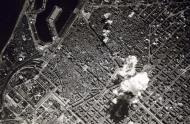
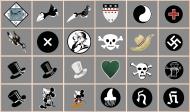
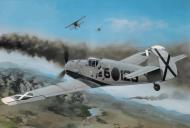

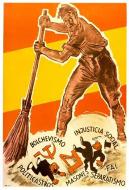

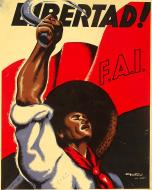


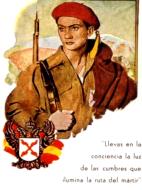
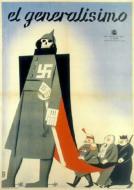

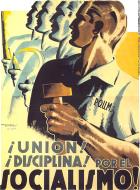
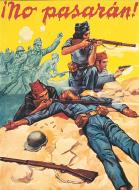







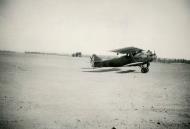







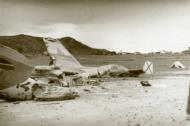

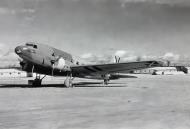



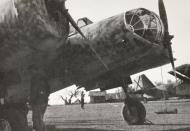
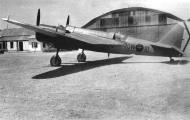





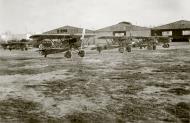

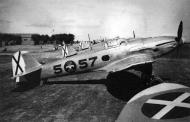



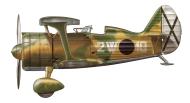
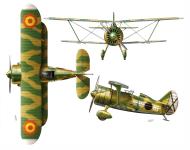





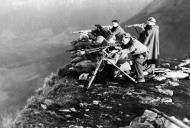
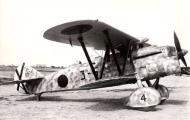



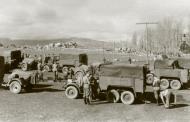
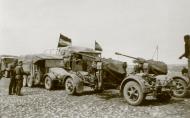

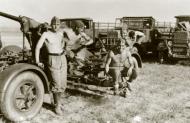
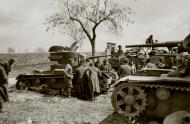
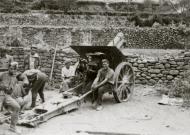

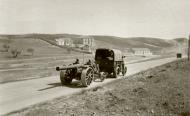

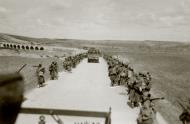










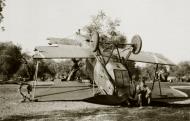








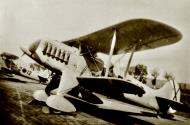







-Legion-Condor-14x34-Spanish-Civil-War-eBay-01.jpg)
-Legion-Condor-14x36-Spanish-Civil-War-01.jpg)
-Legion-Condor-on-a-reconnaissance-op-Spanish-Civil-War-01.jpg)
-Legion-Condor-on-a-reconnaissance-op-Spanish-Civil-War-1936-01.jpg)
-Legion-Condor-Spain-ebay-01.jpg)


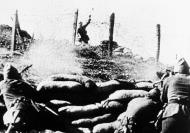
-Nationalist-AF-Legion-Condor-seaplane-527-web-01.jpg)

